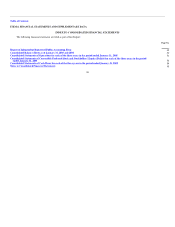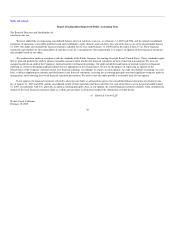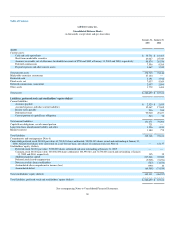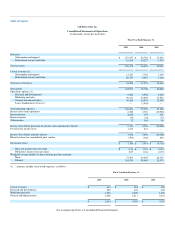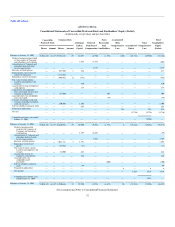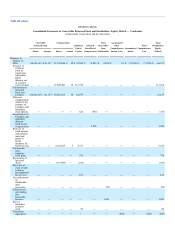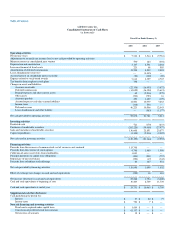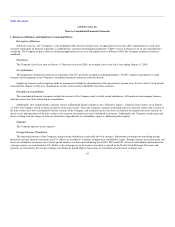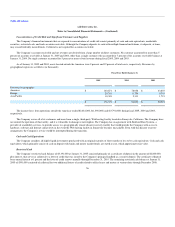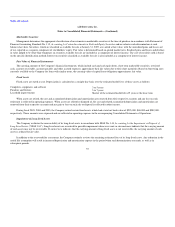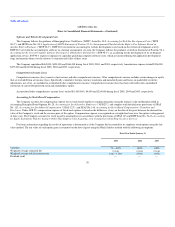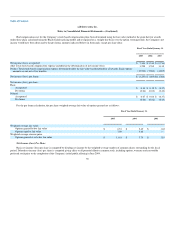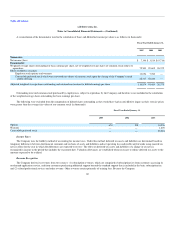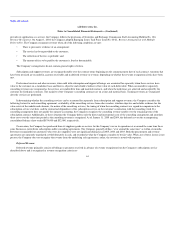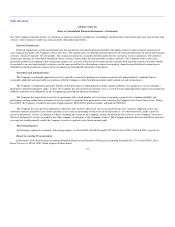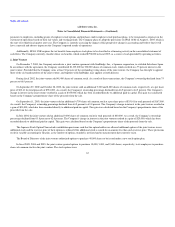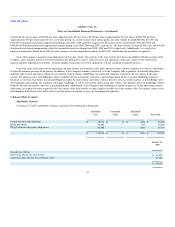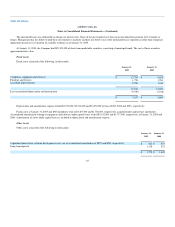Salesforce.com 2004 Annual Report Download - page 62
Download and view the complete annual report
Please find page 62 of the 2004 Salesforce.com annual report below. You can navigate through the pages in the report by either clicking on the pages listed below, or by using the keyword search tool below to find specific information within the annual report.
Table of Contents
salesforce.com, inc.
Notes to Consolidated Financial Statements
1. Summary of Business and Significant Accounting Policies
Description of Business
Salesforce.com, inc. (the "Company") is the leading provider, based on market share, of application services that allow organizations to easily share
customer information on demand. It provides a comprehensive customer relationship management ("CRM") service to businesses of all sizes and industries
worldwide. The Company began to offer its on-demand application service on a subscription basis in February 2000. The Company conducts its business
worldwide.
Fiscal Year
The Company's fiscal year ends on January 31. References to fiscal 2005, for example, refer to the fiscal year ending January 31, 2005.
Use of Estimates
The preparation of financial statements in conformity with U.S. generally accepted accounting principles ("GAAP") requires management to make
estimates and assumptions in the Company's consolidated financial statements and notes thereto.
Significant estimates and assumptions made by management include the determination of the provision for income taxes, the fair value of stock awards
issued and the adequacy of the lease abandonment accrual. Actual results could differ from those estimates.
Principles of Consolidation
The consolidated financial statements include the accounts of the Company and its wholly owned subsidiaries. All significant intercompany balances
and transactions have been eliminated in consolidation.
Additionally, the Company holds a majority interest in Kabushiki Kaisha salesforce.com ("Salesforce Japan"), a Japanese joint venture. As of January
31, 2005, the Company owned a 63 percent interest in the joint venture. Given the Company's majority ownership interest in the joint venture, the accounts of
the joint venture have been consolidated with the accounts of the Company, and a minority interest has been recorded for the minority investors' interests in
the net assets and operations of the joint venture to the extent of the minority investors' individual investments. Additionally, the Company records gains and
losses resulting from the change of interest in Salesforce Japan directly to stockholders' equity as additional paid-in capital.
Segments
The Company operates in one segment.
Foreign Currency Translation
The functional currency of the Company's major foreign subsidiaries is generally the local currency. Adjustments resulting from translating foreign
functional currency financial statements into U.S. dollars are recorded as a separate component of stockholders' equity. Foreign currency transaction gains and
losses are included in net income (loss) for the period and have not been material during fiscal 2005, 2004 and 2003. All assets and liabilities denominated in
a foreign currency are translated into U.S. dollars at the exchange rate on the balance sheet date as quoted on the Pacific Stock Exchange. Revenues and
expenses are translated at the average exchange rate during the period. Equity transactions are translated using historical exchange rates.
55


